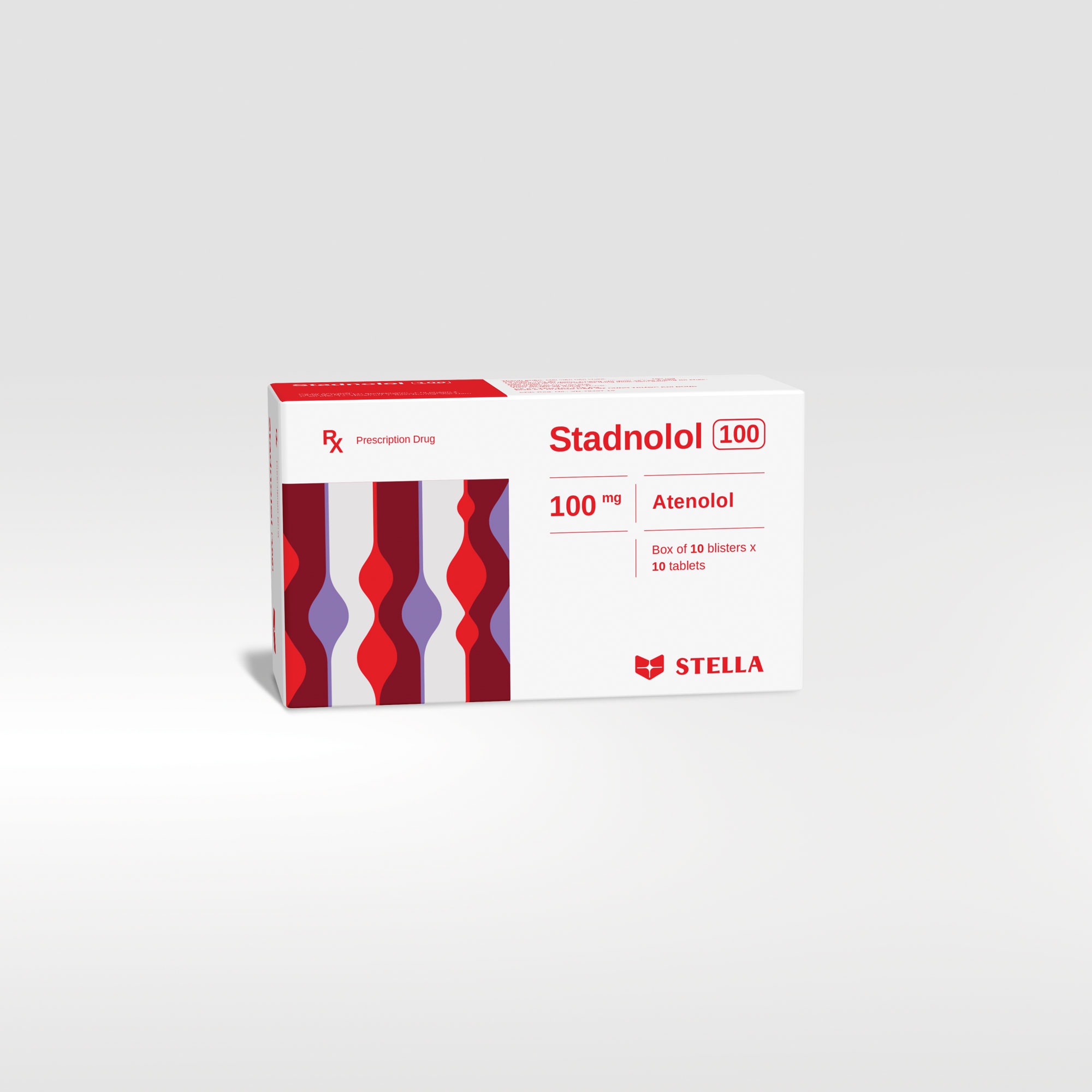Indications
Treatment of hypertension, chronic stable angina pectoris, supraventricular tachy-arrhythmia, for early intervention in the acute phase of myocardial infarction and long-term treatment to prevent following acute myocardial infarction.
Dosage
- Hypertension:
The initial dosage is 25 – 50 mg once daily. The full hypotensive effect may be seen after 1 to 2 weeks.
Oral dosage may be increased to 100 mg once daily for optimum response.
- Angina pectoris:
The initial dosage is 50 mg once daily. If an optimum response is not achieved within one week, oral dosage should be increased to 100 mg once daily.
- Cardiac arrhythmias:
Following control with intravenous atenolol, a suitable oral maintenance dosage is 50 – 100 mg daily, given as a single dose.
- Early management of acute myocardial infarction:
Patients tolerating the total IV dose of 10 mg can receive 50 mg orally 10 minutes later and then 50 mg orally 12 hours later. Dosing is continued orally for 6 – 9 days at 100 mg daily given as a single daily dose or in 2 equally divided doses.
If bradycardia and/or hypotension requiring treatment, or any other untoward effects occur, atenolol should be discontinued.
- Patients with renal insufficiency:
The dose of atenolol should be reduced in patients with renal impairment, depending on the creatinine clearance (CC) as follows:
CC 15 – 35 ml/minute per 1.73 m2: A maximum dosage of 50 mg daily is recommended.
CC less than 15 ml/minute per 1.73 m2: 25 mg daily or 50 mg every other day.
- Dialysis patients:
25 – 50 mg orally after each dialysis.
Usage
Stadnolol 100 is administered orally before meals.











